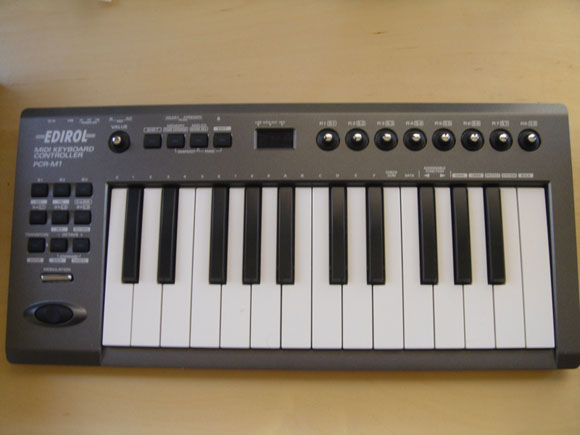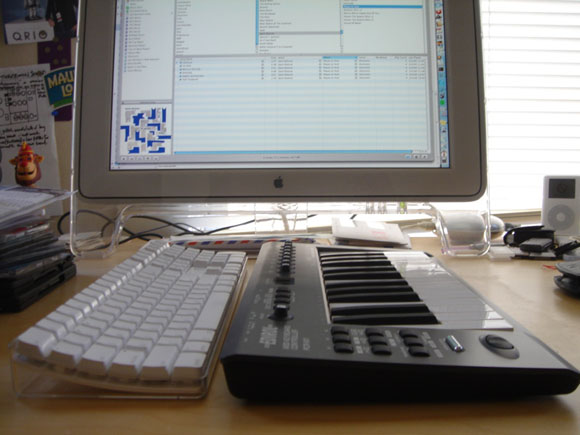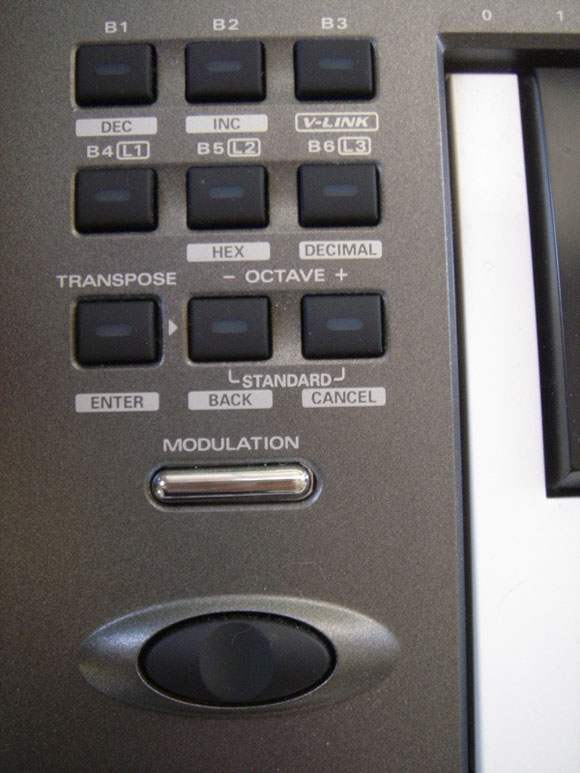
Backpack digital musicians seeking even more portability, the PCR-M1 remains the holy grail of thin keyboards. CDM’s own Lee Sherman gives Edirol’s keyboard-on-a-diet a pin to see if you’ll miss the extra inches and pounds. -PK
Musicians looking for a MIDI Keyboard Controller are spoilt for choice these days, with controllers for everyone from DJs and laptop musicians to classically trained concert pianists. So where does the PCR-M1 fit in?
Edirol, who has been in the controller game longer than most, have clearly aimed it at the computer musician who wants to slip this thing into a backpack along with a laptop and go. This is the same territory in fact, that M-Audio mapped out with its highly successful Oxygen 8. But the PCR-M1 goes the Oxygen 8 a few steps better. (read more)

The S.L.I.M. Keyboard, first seen on the companies� PCR-1 is the most portable yet still playable keyboard on the market today. It measures a mere one inch thick and weighs just a bit over 2 lbs. If you don�t have room for this in your project studio, you should probably consider moving to a bigger place.
Like most controllers of this type, it includes 25-standard width keys. The short keys and shallow action are a necessary compromise but the keyboard feels solidly made, quite unlike the cheap-feeling keys found on too many other controllers. The charcoal gray exterior looks professional and helps work against the impression that something so small can�t seriously be considered a real musical instrument.
The controls include a single infinite rotary encoder that affects whatever parameter you have selected and eight assignable knobs that send MIDI values to their assigned destinations. The four buttons alongside the rotary encoder can be used to set MIDI channel, select banks, change programs, and other common operations. A simple three-character LED is available to indicate current values.
Nine additional buttons to the left of the keyboard perform functions such as octave shift, transpose, enter, back, cancel, and transport control functions. The button arrangement is logical, functional and complete. It�s difficult to imagine any hardware function or software parameter that couldn�t be controlled by this device.

I was less impressed with the performance controls which are unlike any I�ve encountered. In place of the usual wheels or joystick are a short metal bar, used for modulation, and a rubberized oval-shaped pitch bend control. The PCR-M1 can be powered by the USB bus, four AAA batteries, or an optional AC-adapter, adding greatly to its portability.
Peering around the back, you�ll find MIDI In and Out, and jacks for connecting sustain and expression pedals. The VJs in the house will welcome the inclusion of a V-Link connector, allowing you to link your musical performances to video.
Other controllers these days, from the likes of Novation and M-Audio, come already set-up for use with leading software instruments, so I was a bit disappointed that I had to spend the time creating my own templates. Fortunately, this is made relatively easy with the inclusion of some plastic overlay templates and a software editor. The editor�s MIDI Learn function allows you to quickly map the hardware controls to software parameters.
I used the PCR-1 to control a variety of software instruments running on my Mac G5 in both standalone and plug-in mode and found it to be extremely responsive. I was pleasantly surprised by the keyboard feel but I never could get used to the mod and pitch bend controls. I found both to be awkward to use and wouldn�t want to be stuck with them for extended soloing.
Despite these minor reservations, the PCR-M1 remains a very good choice for DJs, VJs, and anyone who wants to add an extremely compact yet still playable and functional controller to their gig bag.